Great technical writing is designed to help users increase their knowledge and solve problems they’re facing in their work.
That means it needs to present information in ways that are easily accessible and digestible for the reader, which isn’t always simple to do.
To help you achieve this goal and hone your technical writing skills, we’re presenting you with a list of 7 characteristics of great technical writing, so read on and find out what technical writing should really be.
Clarity
It comes as no surprise that the readers of technical documentation have a simple goal in mind: finding the information they need and absorbing it quickly.
So how should this simple goal influence your technical writing process?
Well, it should motivate you to write as clearly and concisely as possible.
You should always strive to deliver the relevant information in a way that’s easy to understand and leaves no room for misinterpretation.
This might seem deceptively easy to do, but it’s actually an aspect of the job that many technical writers struggle with.
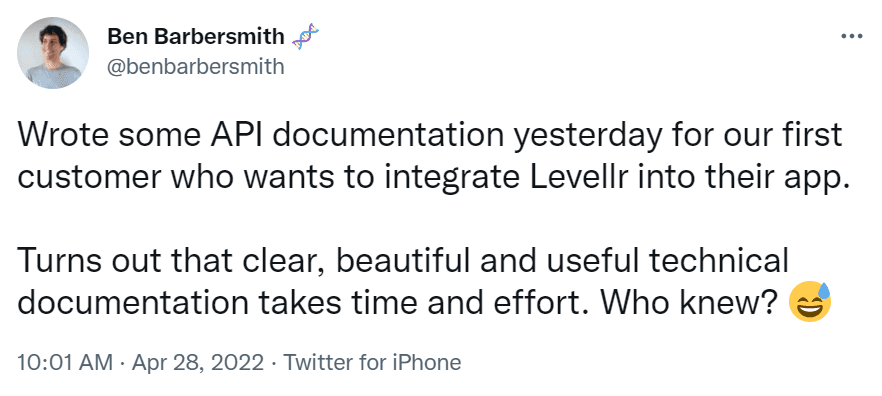
Source: Twitter
Thankfully, technology is here to help.
If you’re noticing it takes you a lot of space to arrive at your point, it may be a good idea to try out some writing apps that can help you write more clearly and concisely.
Grammarly is a good example of such an app.
Among other useful features, Grammarly can check the clarity and conciseness of your writing and alert you to sentences that may be unclear or too wordy.
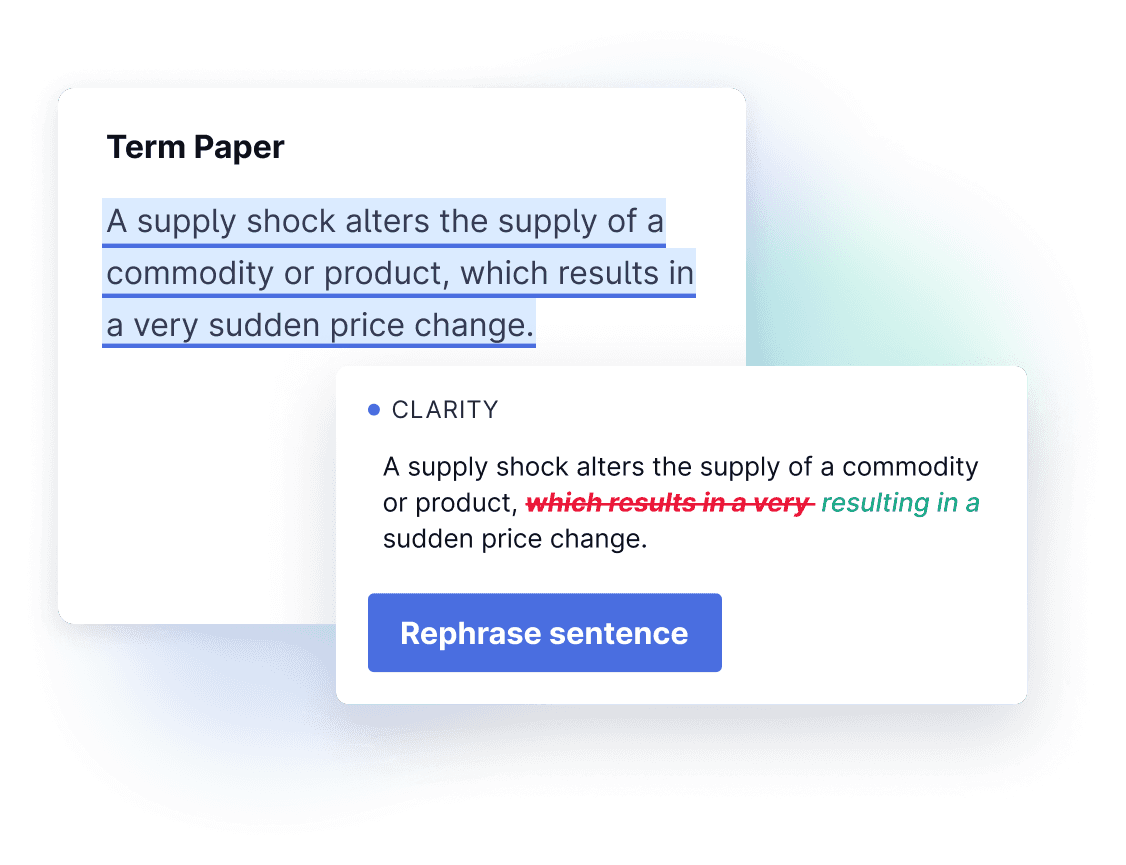
Source: Grammarly
As you can see in the example above, the app even suggests quick solutions to instantly improve your writing.
Another great tool that actually specializes in clarity and concise writing is the Hemingway App.
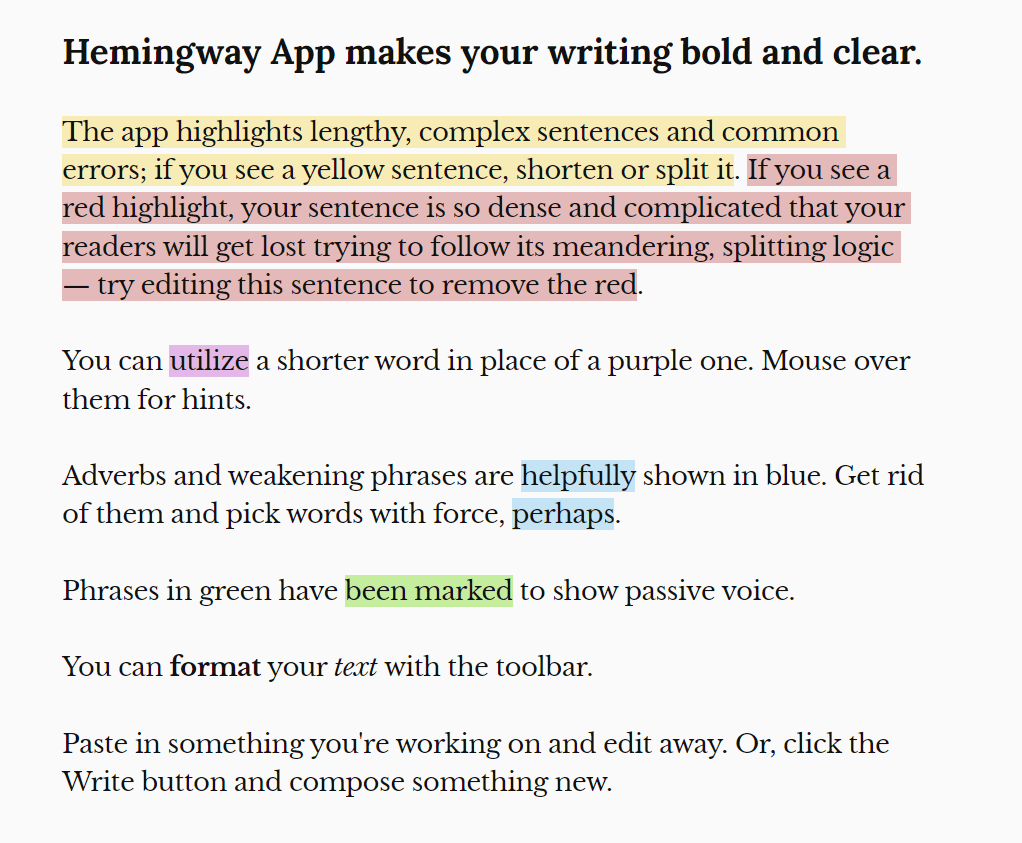
Source: Hemingway App
This app is even more efficient in finding run-on sentences and passages where meaning gets buried under too much needless information.
It also shows you opportunities to make your writing bolder and more to the point, which is always a plus in technical writing.
However, you’ll need to copy your text into the app’s editor to analyze your writing, while Grammarly can be used within any writing tool you're using, be it MS Word, Google docs, or the editor of your knowledge management system.
Remember, your readers need to access important information with minimum effort and maximum efficiency, meaning that clarity is one of the most important qualities of technical writing.
So keep your writing clear and to the point, and if you’re finding that difficult, enlist the help of technology to keep improving your work.
Thoroughness
Another characteristic of good technical writing is providing the reader with every detail they need to accomplish their goals.
In practice, that means covering every aspect of the topic you’re writing about and supplementing your work with diagrams, visuals, code, and anything else that will help the reader comprehend and act on the information.
For example, imagine you’re writing a step-by-step guide for setting up and using a software product.
Neglecting to include even the smallest step towards successful installation could impede the user’s progress and even cause them to churn soon after signing up.
That’s the power of detailed technical documentation.
It can support customers (or employees) as they learn about a product, and prevent them from abandoning it in frustration because they feel it’s too difficult to use.
Let’s look at an example from PrimeLocal, the lead generation tool for local businesses.
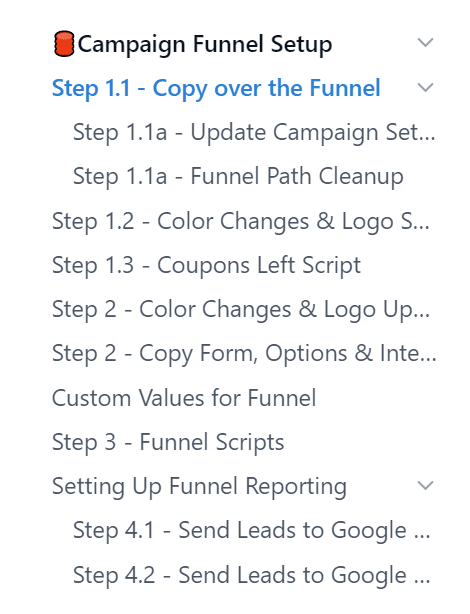
Source: PrimeLocal
This is a great instance of a detailed setup guide. Each step is covered in detail and broken down into even smaller steps to make sure the user is supported at every stage.
Clicking on a particular step, the reader is provided with clear instructions on how to complete it, supplemented with screenshots that present the setup process in visual terms.
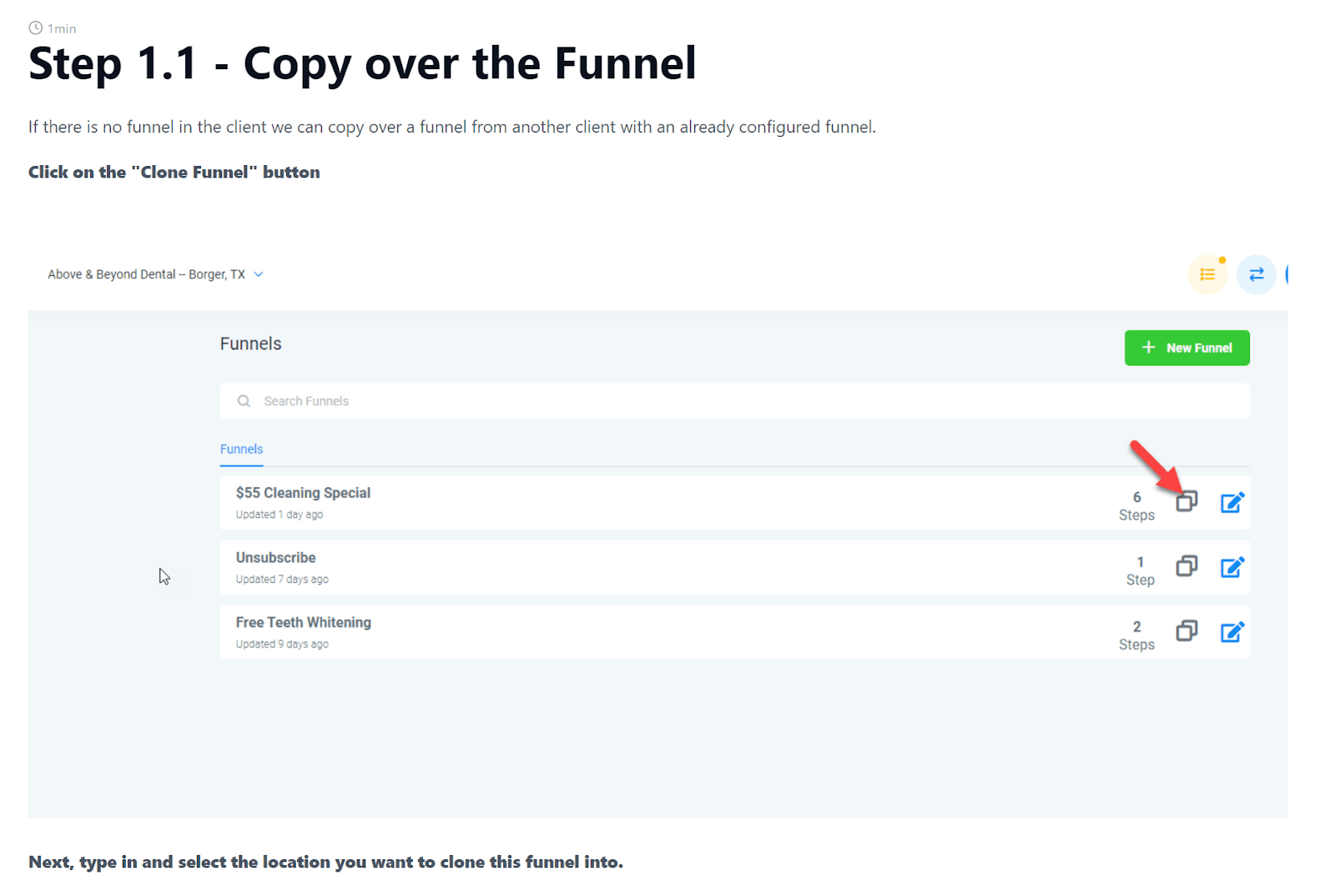
Source: PrimeLocal
Being as detailed as possible and supplementing your writing with other materials is a surefire way to bring your readers to the point of success.
Therefore, omit nothing and never assume that your reader knows everything.
Relevance
As you’re writing clear, concise, and detailed technical documentation, don’t forget to also keep it relevant to the topic you’re writing about.
As a technical writer, you know that a single topic can be covered from multiple angles.
A characteristic of good technical writing is the ability to nail the reader’s intent and provide information relevant to the pain point they’re trying to solve.
To do that, you’ll need to consider who your reader is. Are they an end-user trying to find out how to use the product you’re writing about?
Then provide them with easy instructions on how to use the features of your product, like in this short tutorial from Slack:
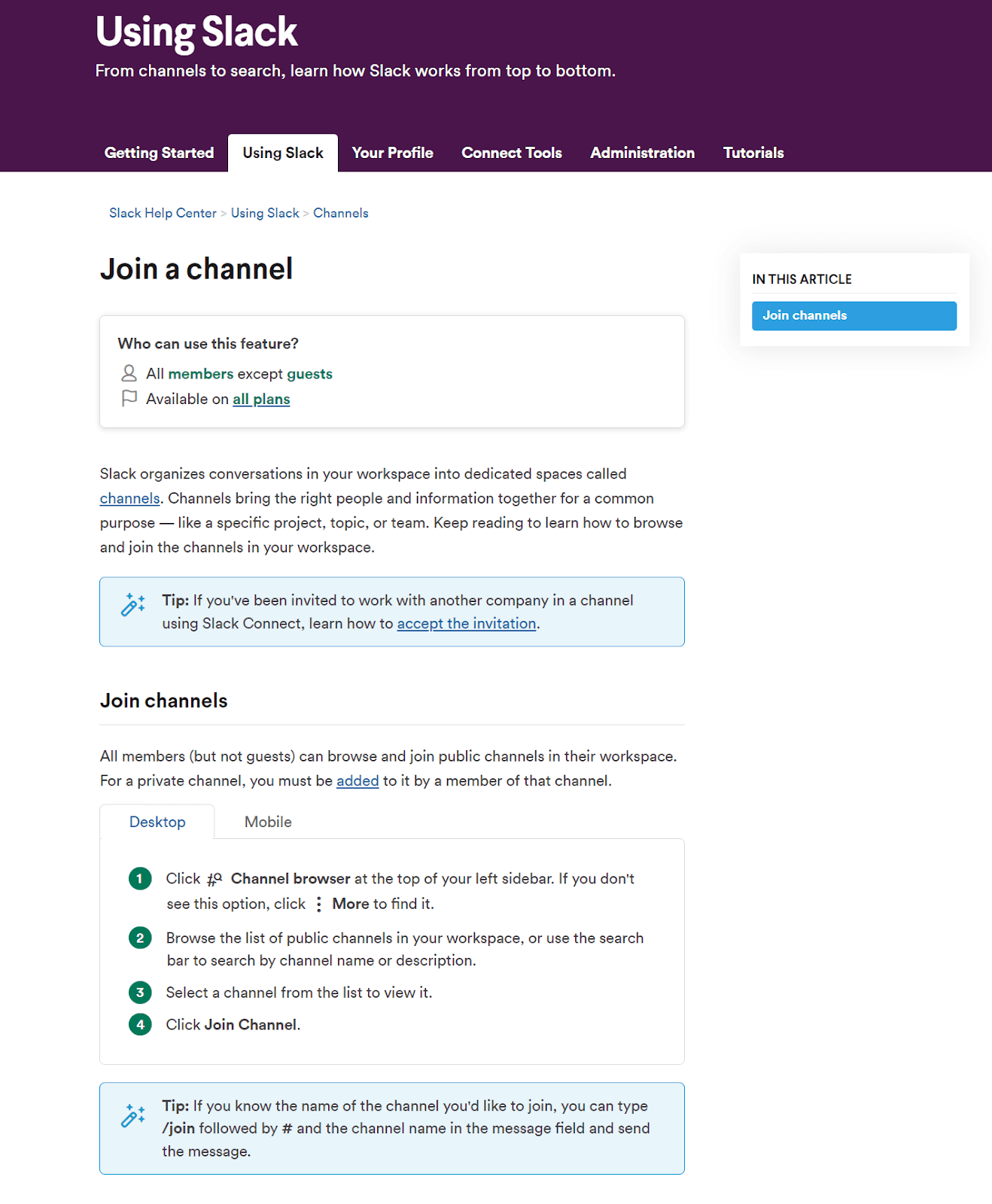
Source: Slack
On the other hand, if the intended audience is a developer who wants to know how the product works so they can customize it, then the relevant information to them are the technical specifications and feature descriptions for the product.
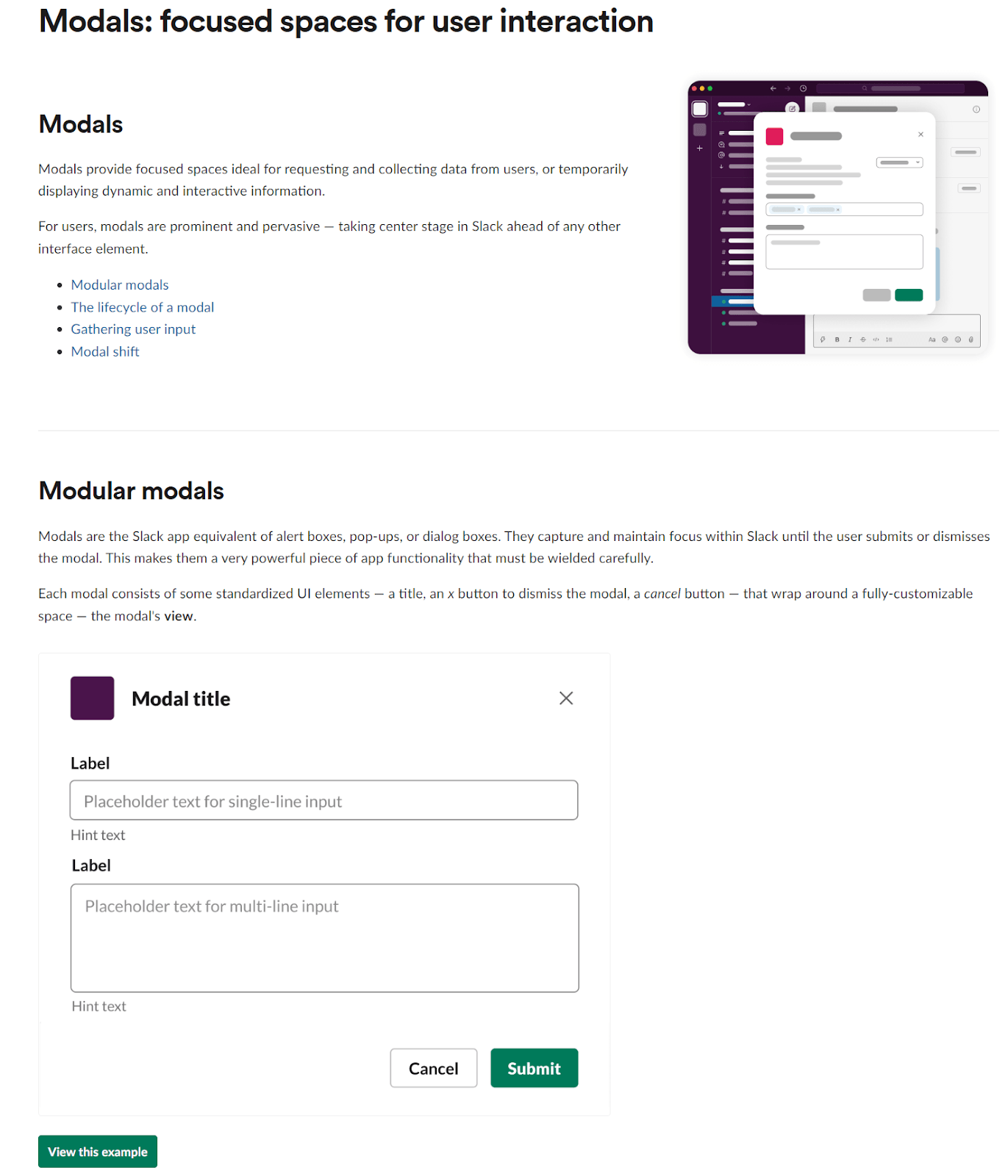
Source: Slack
As you can see, both examples tackle the same topic: the features of the communication app Slack.
However, the first example provides instructions on how the app is used, while the other one details how the features of the app were built and what elements they comprise.
The two documents thus serve two different audience segments (end-users and developers) by providing only the information relevant to the needs of the reader (using the app and learning about the app).
Keeping your writing relevant in this way is the only way to ensure you’re providing the right content to the right user.
Valid Reasoning
Sound logic is the hallmark of quality technical writing. In a good technical document, explanations and instructions should flow in a natural order.
Also, you should avoid inconsistencies and logical fallacies that can make readers doubt your writing.
Here’s an excellent example of a set of instructions that form a logical sequence.
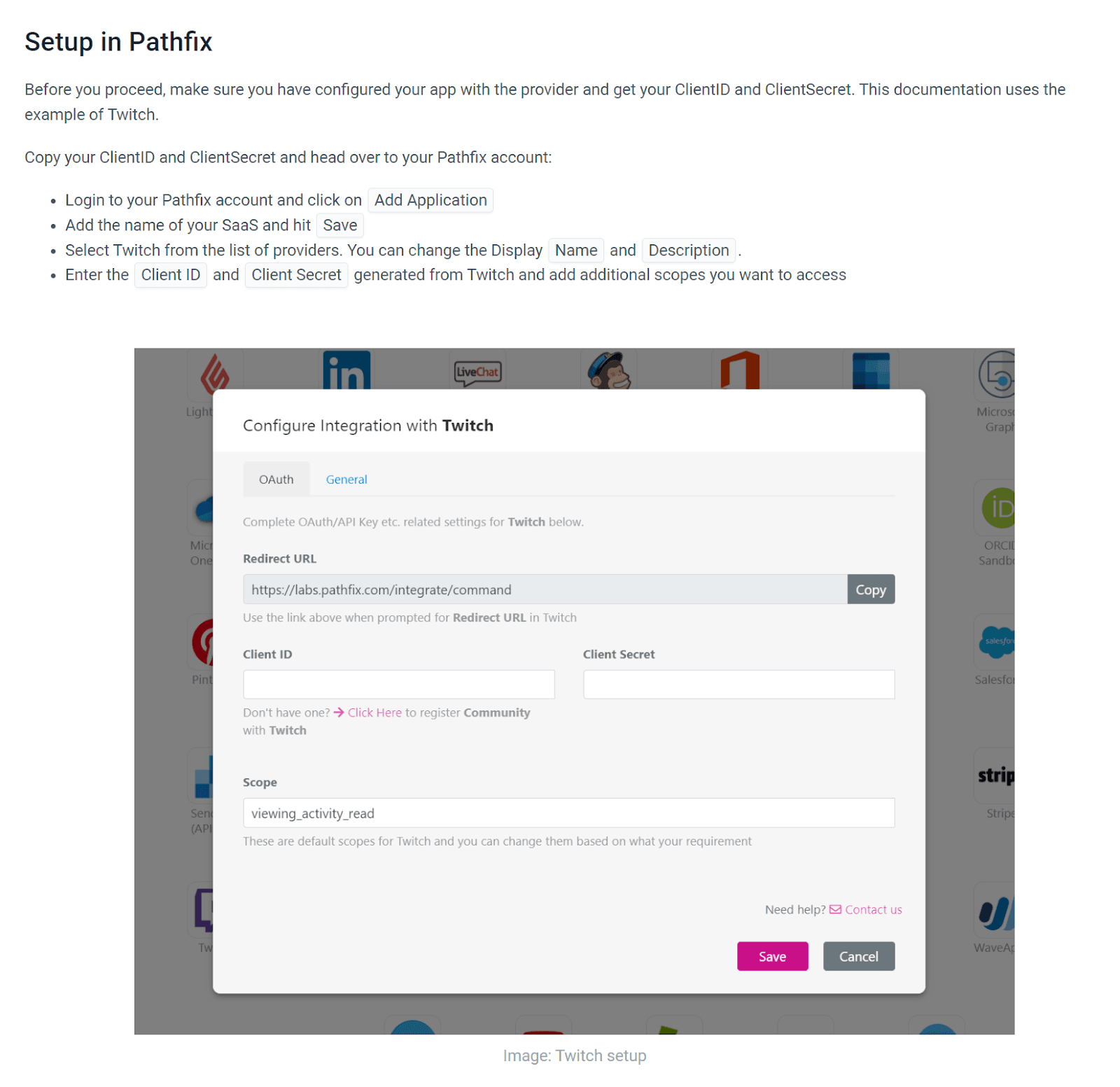
Source: Pathfix
The instructions start with an overview of what should be configured before the setup process is initiated.
After that, a step-by-step guide carries the user through the setup process in a logical order.
Notice that these instructions wouldn’t make sense if these steps changed places. That’s what we mean by logical order. You can’t pass through a door before you’ve opened it, can you?
The other aspect of logic we mentioned are inconsistencies and fallacies that could make your writing sound nonsensical.
Here are some examples:
- Unreasonable statements: these are statements that contradict common sense and make your writing seem unreliable.
Example: Microsoft Excel is the best writing software.
- Sweeping generalizations: conclusions made on the basis of insufficient data.
Example: All companies use Microsoft Excel for data entry.
- False clauses: statements that appear to have a false cause and effect relationship.
Example: Microsoft Excel is a spreadsheet program. Therefore, Microsoft Word has spellcheck capabilities.
Avoiding errors in logic might seem simple to do, but the truth is that wrong instruction sequences and illogical arguments are common occurrences in technical documentation.
The only way to steer clear of them is to review your work and test it to see if the logic of the document falls apart at any point.
Factual Accuracy
It goes without saying that good technical writing should be rooted in facts.
Remember, readers of technical documentation turn to your writing because they want to achieve their goal or relieve a pain point.
That means that all other information, such as personal opinions, anecdotes, and digressions, is irrelevant to their search and will only waste their time.
Let’s dive right in with some examples of factual documentation.
First up, have a look at ChartHop’s introduction page in the company’s knowledge base:

Source: ChartHop
This document sticks only to the facts. It explains what the product does, who it’s intended for, and what its value proposition is.
There’s no mention of ChartHop being the “best” platform of its kind or anything else that would be indicative of a personal opinion.
Here’s another example from Datree:

Source: Datree
Once again, there are no promises or grand declarations made. The only thing that’s present is an objective statement of what the user can expect from the product.
In both cases, it might seem like the writer missed an opportunity to build up their product and motivate the reader to use it.
However, good technical writers recognize that their goal isn’t to advertise their product but to help users achieve success using it.
And, honestly, is there a better advertising strategy?
In conclusion, if you want to produce quality technical writing, make sure everything you write is firmly rooted in facts, knowledge, and research.
Everything else is a distraction to the reader and won’t help them find the information they need on time and with minimum effort.
Logical Structure
To build on our last point, as readers turn to your writing in need of fast knowledge, you’ll need to ensure they have no trouble finding it by providing a good structure for your documents.
Let’s have a look at some good practices concerning technical documentation structure.
First of all, one of the worst things you can do is present your writing as a massive wall of text.
This will definitely put off your readers because they’d need to read the entire document to find the piece of information they’re looking for.
Instead, good technical writing presents the document as a series of meaningful sections and gives each one a clear heading or title.
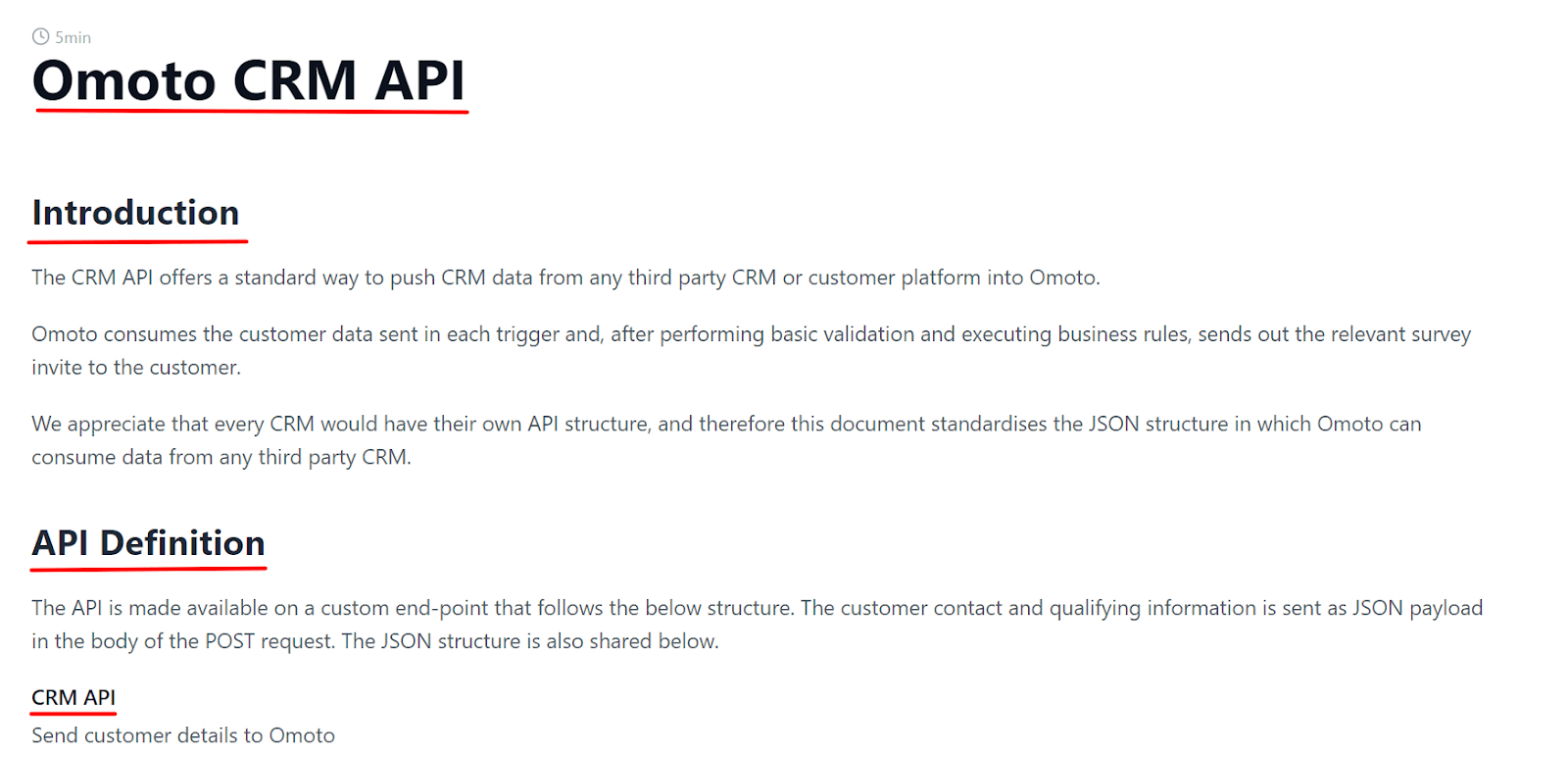
Source: Omoto
You can see a good example of using headings and subheadings above. Doesn’t this make the document much neater and more readable?
If you’re working with quality documentation software to write your technical documents, you should also take advantage of any navigation and search capabilities to make your documentation easy to access and navigate, like in the example below.
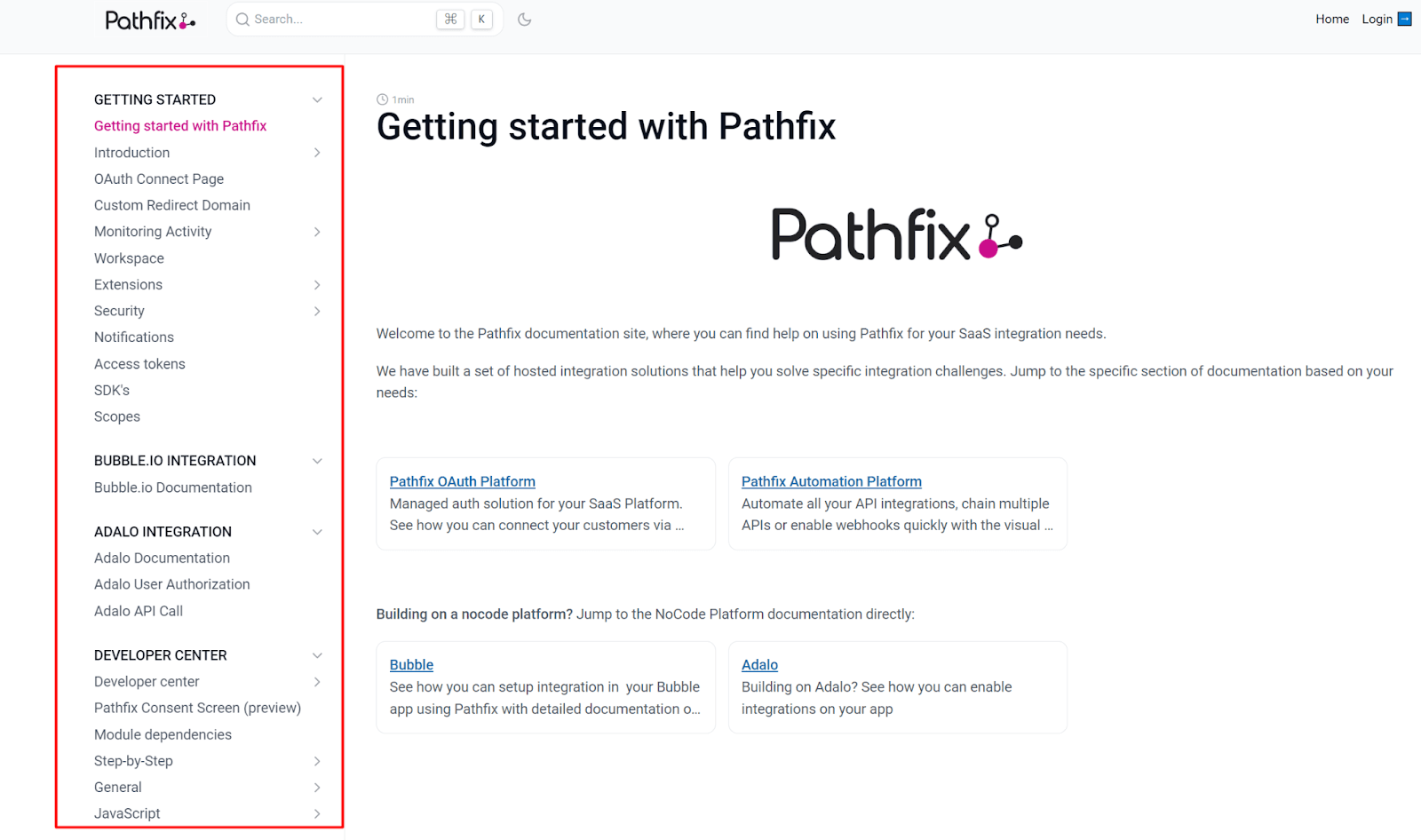
Source: Pathfix
Archbee, the documentation software that we’ve built with easy navigation, searchability, and accessibility in mind, enables writers to create navigation menus with a drag-and-drop function, like the one above.
We also offer powerful searchability that allows users to quickly find anything they need within a document collection or a single document.

Source: Archbee
Last but not least, Archbee boasts a powerful knowledge graph function that allows readers to see connections between documents and read their way through the entire workspace.
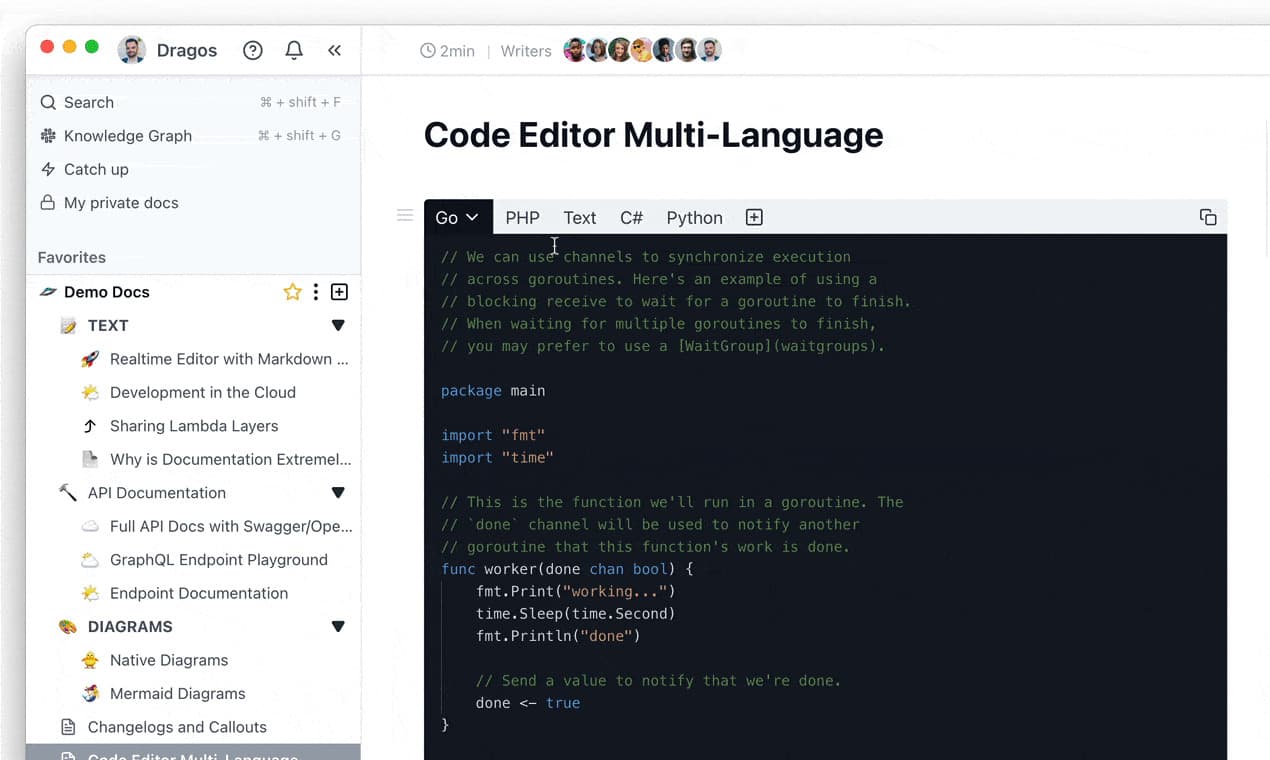
Source: Archbee
Technical documentation is almost useless without a solid structure. That counts for the structure within a document, as well as the structure of the entire knowledge base.
At Archbee, we recognize the value of good structure in knowledge management, which is why we built our software to prioritize structure and make navigation easier than ever, for writers and readers alike.
Problem-Solving Focus
As we’ve said before, technical writing should always empower readers to achieve their goals and relieve their pain points.
This simple truth should inform all technical writing and every technical document should end with a problem solved for the reader.
Mind you, this doesn’t mean that every technical document is a troubleshooting guide.
The problem, in this context, can simply mean setting up a product so that the reader can start using it immediately.
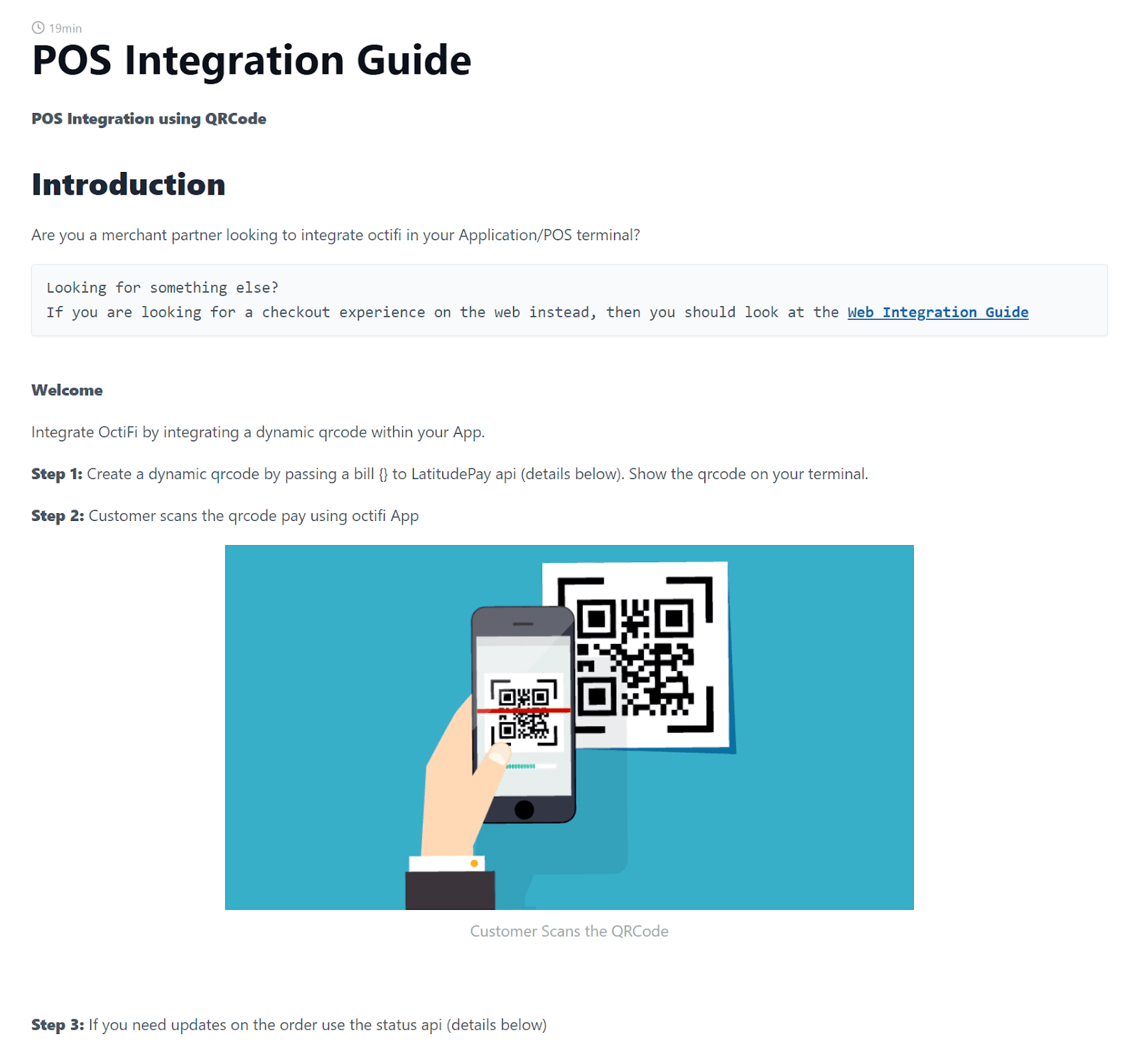
Source: Latitude Pay
Or it can be an example of the product in action to show the reader some good practices they can integrate into their own workflow.
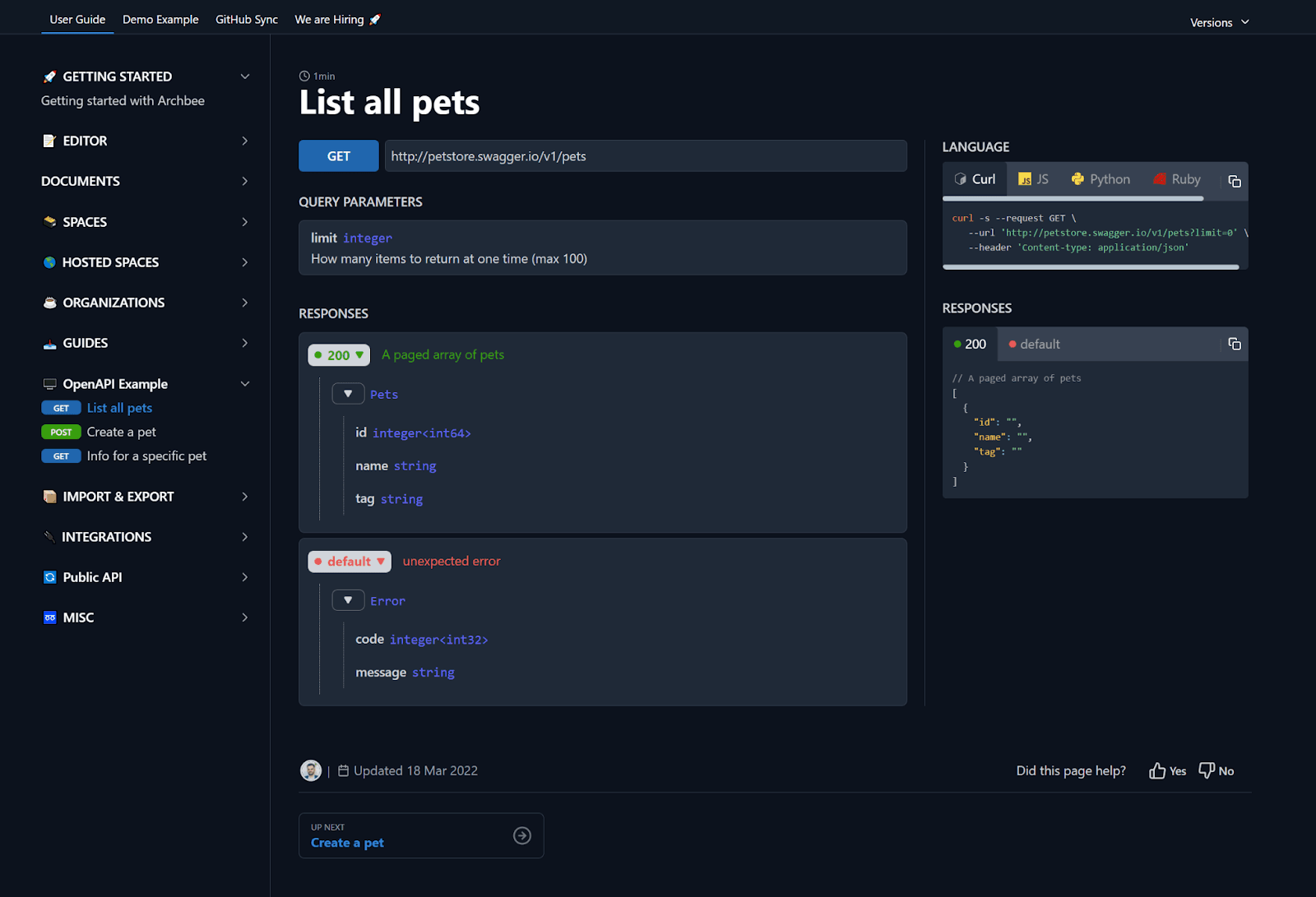
Source: Archbee
It can even be a purely theoretical whitepaper intended to develop the user’s skills and enhance their technical knowledge, like in this example from Google.

Source: Google
In that sense, any writing that results in increased knowledge and a clear path forward for the reader can be considered problem-solving-oriented.
Common mistakes that technical writers should avoid
Technical writing isn’t there to influence opinions or stir emotions. It’s clearly presented information that indicates real-world solutions.
While technical writers strive to create accurate, clear, and concise content, they can sometimes fall into common pitfalls that can hinder their communication efforts. As such, it's important for technical writers to be aware of these common mistakes and take steps to avoid them.
- Using overly technical jargon: Technical writing should be clear and concise, but it's important to avoid using too much technical jargon that may not be familiar to the reader. Technical writers should make sure their writing is accessible to their intended audience.
- Failing to understand the audience: Technical writers need to understand who their readers are and write content that is appropriate for their knowledge level and needs. Writing for a non-technical audience requires a different approach than writing for a highly technical audience.
- Poor organization: Technical writing should be well-organized and structured in a logical way. If the information is disorganized or confusing, it will be difficult for readers to understand and may result in errors or mistakes.
- Using passive voice: Passive voice can make technical writing sound dry and difficult to understand. Technical writers should strive to use active voice whenever possible to make the writing more engaging and easier to follow.
- Failing to review and edit: Technical writers need to review and edit their writing carefully to ensure accuracy and clarity. Failing to review and edit can lead to errors or mistakes that could have serious consequences.
- Not using visuals: Technical writing can often be improved by including visuals like diagrams, illustrations, or images. Failing to use visuals can make technical content difficult to understand and less engaging for readers.
- Overlooking the importance of design: Technical writing should be visually appealing and easy to read. Failing to consider the design and layout of technical content can make it less effective and less engaging for readers.
By avoiding these common mistakes, technical writers can create content that is accurate, clear, and engaging, and that effectively communicates technical information to the intended audience.
Conclusion
It’s clear that technical writing needs to do many things at once.
Along with being clear, detailed, relevant, logical, and factual, it also needs to be presented in a clear structure and result in actionable solutions to the problems the reader is facing.
Achieving all of this with your writing may seem very challenging, but it can also be very rewarding.
We hope this list of characteristics of great technical writing will help you on your way towards empowering your readers with amazing technical documentation.
Frequently Asked Questions
Effective technical writing helps readers solve a problem quickly and confidently. Hallmarks include: - Clarity: Plain language, short sentences, and defined terms minimize ambiguity. - Thoroughness: Complete steps, prerequisites, edge cases, examples, visuals, and code where relevant. - Relevance: Tailored to the reader’s role and intent; avoids off-topic details. - Sound reasoning and factual accuracy: Logical sequencing, no contradictions, and verified facts. - Logical structure: Clear headings, scannable sections, and consistent patterns so content is easy to navigate. - Problem-solving focus: Oriented around user goals, expected outcomes, and next steps. - Maintainability and consistency: Versioned, up to date, and aligned with a style guide and glossary. - Accessibility and findability: Descriptive headings, alt text, readable formatting, and strong search. Also avoid common pitfalls: jargon overload, guessing at audience needs, poor organization, passive voice, skipping reviews and edits, underusing visuals, and neglecting layout and design.



